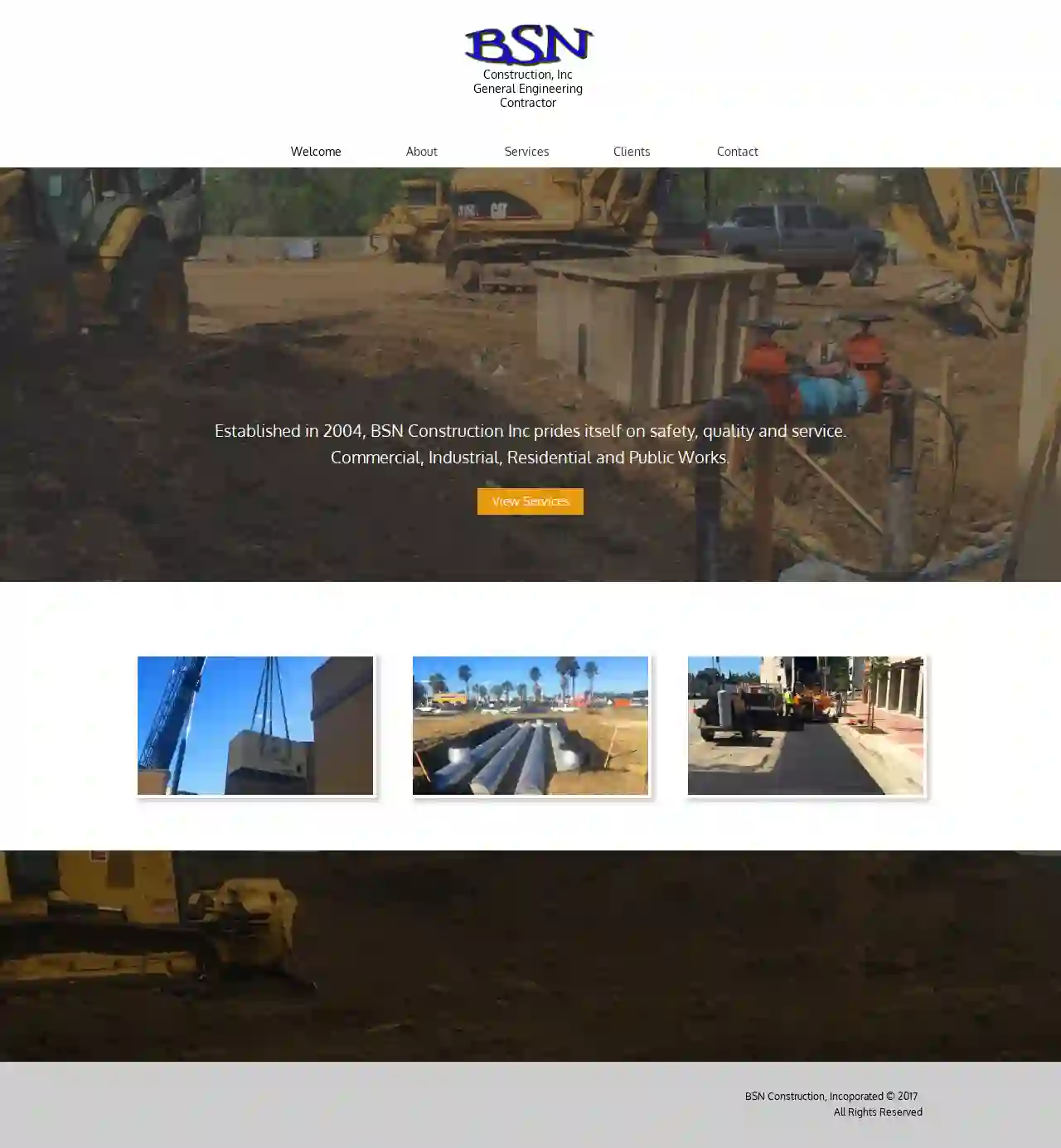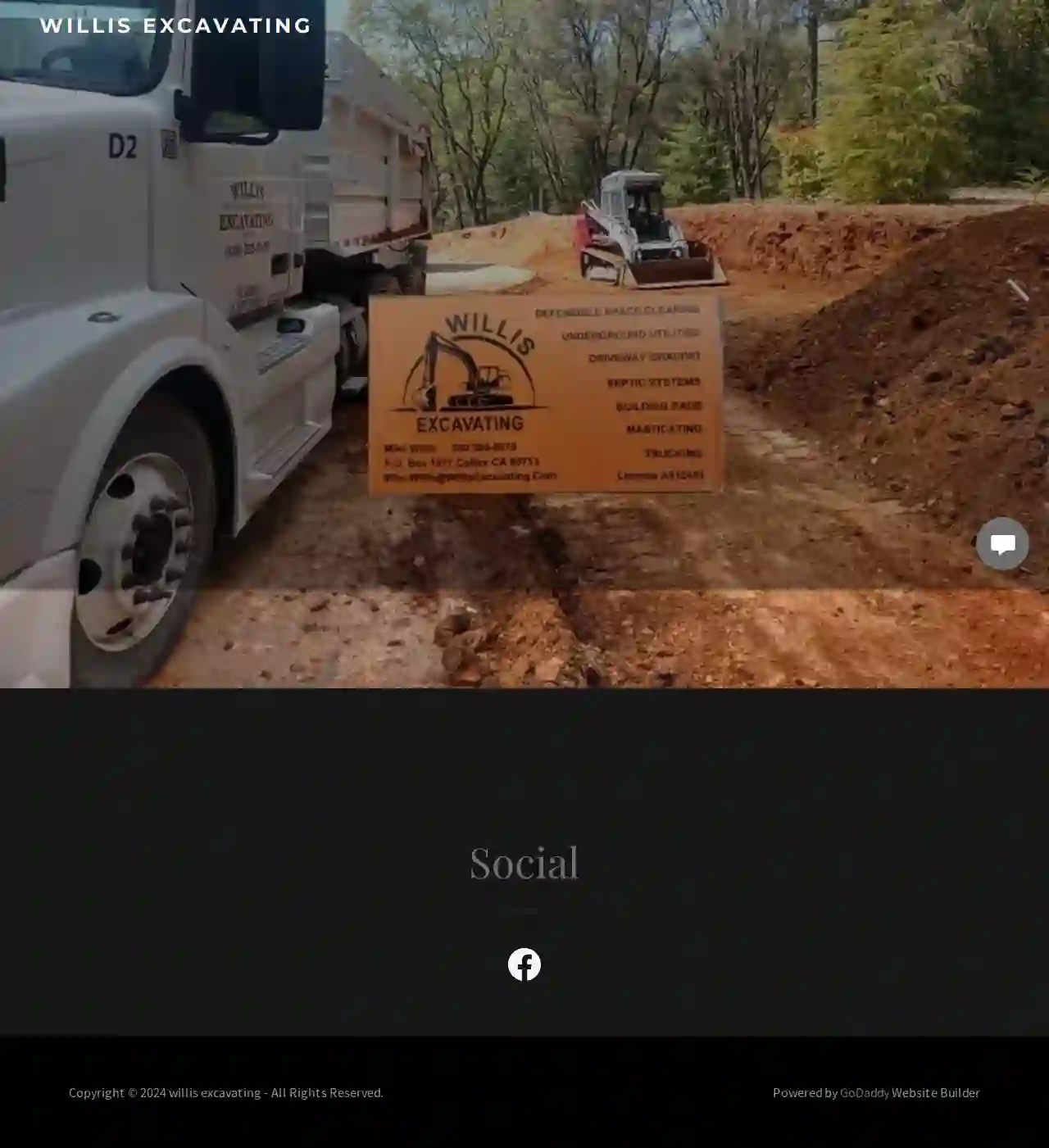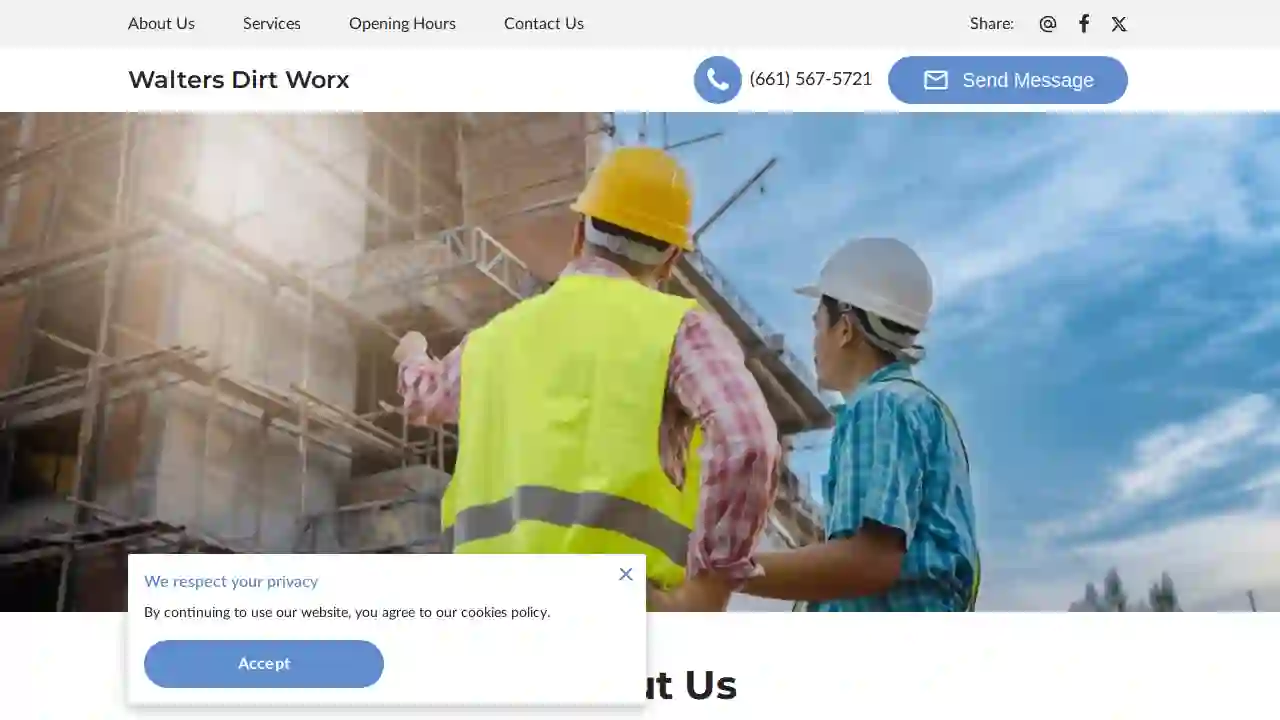Excavation Contractors Seaside
Best Excavation Contractor in Seaside
Get up to 3 Excavation Company Near Me quotes for your project today! Compare profiles, reviews, accreditations, portfolio, etc... and choose the best deal.

BSN CONSTRUCTION, INC
1Suite 200, 1000 Old Country Rd, Garden City, 11747, USBSN Construction: Your Trusted Partner for Quality Construction BSN Construction is a family-owned and operated business with over 20 years of experience in the construction industry. We are committed to providing our clients with the highest quality construction services at competitive prices. We specialize in a wide range of construction projects, including residential, commercial, and industrial. We are also a licensed and insured contractor, so you can rest assured that your project is in good hands. We understand that building or renovating your home or business is a big decision. That's why we take the time to listen to our clients' needs and work with them to develop a plan that meets their specific requirements. We are also committed to providing excellent customer service and keeping our clients informed throughout the entire construction process. If you are looking for a reliable and experienced construction company, look no further than BSN Construction. We are confident that we can provide you with the quality construction services you need to make your project a success.
- Services
- Why Us?
Get Quote
Applied EarthWorks
51 reviews1391 W. Shaw Ave., Fresno, 93711, USApplied EarthWorks: Ethical Consultants for Project Success Applied EarthWorks is a company with over 28 years of experience in cultural and paleontological resource management. We are committed to effective and affordable strategies that achieve progress and preservation, working together with our clients to ensure that projects are completed in a way that respects the environment and cultural heritage. We are certified by the California Department of General Services (DGS) as both a Small Business Enterprise (SBE) and a Small Business for Public Works (SB-PW).
- Services
- Why Us?
- Accreditations
- Gallery
Get Quote
Controlled Environments Construction, Inc.
11562 Parkway Loop, Suite E, Tustin, 92780, USControlled Environments Construction (CEC) is your one-stop shop for everything you need when considering a new or remodeled cold storage warehouse, food processing facility, pharmaceutical cold / clean room, waste-water lagoon, industrial warehouse roof-raising or any other project. We've had the pleasure of working with a wide range of clients, from small businesses to large corporations, and we're always happy to help our clients achieve their goals. We're committed to providing our clients with the highest quality construction services, and we're always striving to improve our processes and procedures. We're proud of our work, and we're confident that we can provide you with the same level of quality and service that we've provided to our other clients. Contact us today to learn more about our services and how we can help you with your next project.
- Services
- Why Us?
- Gallery
Get Quote
JPS General Construction
53 reviews123 Main Street, Anytown, 12345, USAbout JPS General Construction JPS General Construction is a family-owned and operated business with over 20 years of experience in the construction industry. We are committed to providing our clients with high-quality workmanship, exceptional customer service, and competitive pricing. We specialize in a wide range of construction services, including: Residential construction Commercial construction Remodeling Additions Roofing Siding Windows and doors Decks and patios Concrete work And more! We are fully licensed, insured, and bonded, and we are committed to providing our clients with peace of mind. We work closely with our clients to ensure that their projects are completed on time and within budget. We are also dedicated to providing our clients with a positive and stress-free construction experience. If you are looking for a reliable and experienced construction company, look no further than JPS General Construction. We are committed to providing our clients with the highest quality construction services available.
- Services
- Why Us?
Get Quote
Austin Enterprise
4.116 reviews1100 James Road, Bakersfield, 93308, USAbout Austin Enterprise For almost 30 years, Austin Enterprise has taken pride in having the best equipment and the best people to get any job done well and on-time. We employ 50+ employees and maintain a truck fleet of 40+ vehicles, ensuring that our customers can rest assured that they are getting quality work with the knowledge and experience of our teams to back it up. We’re proud to have been a CSDA member since 2010. Our mission is to be a professional specialty company. We take pride in ourselves, our company, equipment, and fellow employees. We strive to service our customers with quality service, provide well-trained employees, and maintain good working equipment. We aim to be the best in the industry, exceeding expectations and setting the standard for excellence. Patti Austin, the founder of Austin Enterprise, started the company in 1992 in Bakersfield, CA. Initially, Austin Enterprise focused on traffic control, providing highway construction signs. This early work allowed Patti to connect with other contractors working on highway projects. Through this networking, Patti identified opportunities to expand Austin Enterprise and added sawing and drilling to their list of services. Today, thanks to Patti’s dedication and hard work, Austin Enterprise has grown into one of the largest specialized highway rehabilitation contractors in California, with 47 trucks and over 50 employees. Austin Enterprise is a woman-owned business.
- Services
- Why Us?
- Our Team
- Gallery
Get Quote
Native Field Construction
1Sacramento, USAbout Native Field Construction Native Field Construction is a locally owned and operated business dedicated to providing high-quality construction services to the [CITY] area. We are committed to delivering exceptional results, exceeding client expectations, and building lasting relationships. Our team of experienced professionals is passionate about their craft and takes pride in every project we undertake. We understand that construction projects can be complex and stressful. That's why we strive to make the process as smooth and hassle-free as possible for our clients. We provide clear communication, transparent pricing, and meticulous attention to detail throughout every stage of the project. Whether you're planning a new home, a commercial building, or a renovation, Native Field Construction is your trusted partner. We are committed to delivering projects on time and within budget, while maintaining the highest standards of quality and craftsmanship.
- Services
- Why Us?
- Gallery
Get Quote
A-1 Septic Services
4.675 reviewsModesto, USThe Best Value in Septic Tank Services in Merced County, Stanislaus County, and San Joaquin County Since 1990 The Best Value in Grading & Excavating in Merced County, Stanislaus County, and San Joaquin County Since 1990 Best Choice for Portable Restroom Rentals in Merced County, Stanislaus County, & San Joaquin County Expert Septic Tank Services, Grading & Excavating in Modesto, Oakdale, Escalon & Surrounding Areas For the best septic tank installation and repair, septic tank pumping, utility trenching, and grading/excavation services in Merced County, Stanislaus County, and San Joaquin County, choose A-1 Septic and AAA Backhoe Service. For over 30 years, we've been the preferred septic tank company and excavator for thousands of general contractors, builders, commercial businesses, property managers, city agencies, homeowners, and real estate agents. They trust us because we consistently deliver high quality workmanship and personalized customer service at very competitive prices. Whether you need septic tank repair in Modesto, leach line additions in Ceres, or utility trenching in Salida, we have the skills, knowledge, and expertise to get the job done according to the highest industry standards. AAA Backhoe Service holds a Class A General Engineering Contractors License from the California State License Board, and has earned an A+ rating with the Better Business Bureau. We always use the industry's best practices to ensure that all work gets completed on time, in budget, and in accordance with county and city building codes.
- Services
- Why Us?
- Accreditations
- Testimonials
- Gallery
Get Quote
Willis Excavating
53 reviewsSacramento, US- Services
- Why Us?
Get Quote
Walters Dirt Worx
1Bakersfield, California, USAbout Us Here at Walters Dirt Worx we offer an exceptional range of construction services in the greater Bakersfield area. From concrete foundation work to excavation, brickwork, and architectural advice, our experienced builders understand the best solutions that work for you. We provide any heavy equipment required work with outstanding results and unbeatable pricing. We’re all dedicated to our roles and work hard to get the job done. Give us a call at +16615675721 so we can discuss any of your construction needs. We always use the highest quality materials during the construction of your outdoor space and our expert designers utilise industry-leading tools. This mix of top equipment and unmatched skill has allowed us to succeed by supplying our clients with services they won’t forget. Not convinced? Think we’re all talk? Read our reviews and get in touch to see what we can deliver. You will not be disappointed. Are you putting together a blueprint for a property or building? If you are, we can deliver expert excavation services to prepare a new build for the foundations and basis of your construction. We understand the demands that are placed on you, so work with your goals in mind to prepare and excavate the land by the most efficient means possible, using a combination of manpower and highly technical heavy-duty vehicles.
- Services
- Why Us?
Get Quote
CPRR Bobcat Services INC
58 reviews6633 NW 42nd Ave, Coconut Creek, 33073, USDig Deep, Build Strong Your trusted excavating contractor for all your residential and commercial needs Learn More (754) 457-8773 Affordable Excavation Services by CPRR BOBCAT SERVICES Grading Ensuring a site is level or contoured according to the project’s specifications, which is essential for proper drainage and foundation stability. Pool Excavations Utilizing state-of-the-art excavation equipment, we carefully dig to the exact dimensions and depth of your pool, ensuring accuracy and adherence to design specifications. Demolition We offer demolition services to get your project started. Safely tearing down existing structures and removing debris from the site. From concrete to asphalt demolition. Let us set the foundation for your project. Site Development We offer site development service converting undeveloped land into developed land for new construction. Involves removing and disposing of all unwanted vegetative matter from underground such as stumps, roots, and other debris. Trenching Digging Trenches for utilities such as water, sewer, gas and electrical lines. Backfilling Refilling excavated areas with soil or other materials to support foundations, pipes, and other structures. About CPRR BOBCAT SERVICES Our Expertise At CPRR BOBCAT SERVICES, we specialize in all types of excavation projects, including residential, commercial, and industrial. Our team has the knowledge and skills to handle any challenge and deliver superior results. Our Equipment We use only the best equipment in the industry to ensure efficient and effective excavation. Our fleet includes state-of-the-art machinery that is regularly inspected and maintained to ensure optimal performance.
- Services
- Why Us?
- Gallery
Get Quote
Over 3,943+ Excavation Companies on our directory
Our excavation contractors operate in Seaside & surroundings!
ExcavationHQ has curated and vetted Top Excavation Companies near Seaside. Find the most reliable business today.
Frequently Asked Questions About Excavation Contractors
- Topsoil Removal: Stripping the fertile topsoil layer from a site, often preserving it for landscaping.
- Trench Excavation: Digging long, narrow trenches for utilities (pipes, cables) or foundations.
- Basement Excavation: Removing earth to create a space for a basement beneath a structure.
- Pool Excavation: Digging a precise hole for installing a swimming pool.
- Roadway Excavation: Removing earth and preparing the ground for road construction.
- Demolition Excavation: Clearing debris and preparing the site after demolition.
- Channel Excavation: Creating channels for drainage or irrigation.
- Clear the Area: Remove any obstacles, including vehicles, outdoor furniture, landscaping features, or structures, from the excavation zone and surrounding area.
- Mark Existing Features: Identify and mark underground utilities, septic tanks, sprinkler systems, or other buried elements you want to protect.
- Protect Landscaping: Use tarps or fencing to shield trees, shrubs, gardens, or other landscaping elements from damage.
- Provide Access: Ensure the excavation contractor has clear access to the work area, including gates wide enough for equipment.
- Discuss Logistics: Coordinate with the contractor regarding parking arrangements, material delivery, and any special instructions or concerns you might have.
- New Construction: Laying foundations, basements, or underground utilities for new buildings.
- Home Additions: Creating space for new rooms, basements, or extensions.
- Landscaping: Leveling ground, creating slopes, installing retaining walls, or digging for ponds or pools.
- Drainage Improvement: Installing French drains, drainage ditches, or swales to manage water runoff.
- Utility Installation or Repair: Laying new water, sewer, gas, or electrical lines, or repairing existing ones.
- Demolition: Clearing debris and preparing the site after demolishing a structure.
- Basement Size: The larger the basement, the more excavation is required, increasing the cost.
- Soil Type: Excavating rocky or dense clay soil is generally more expensive than loose soil.
- Accessibility: Difficult-to-access sites might require specialized equipment or more labor, driving up costs.
- Foundation Type: The chosen foundation type (full basement, crawl space, slab) affects excavation needs.
- Underpinning: If underpinning (strengthening existing foundations) is necessary, it significantly increases costs.
- Disposal Fees: Hauling excavated soil to disposal sites adds to the overall expense.
What are the different types of excavation?
How do I prepare my property for excavation?
How do I know if I need excavation for my project?
How much does it cost to excavate a basement?
What are the different types of excavation?
- Topsoil Removal: Stripping the fertile topsoil layer from a site, often preserving it for landscaping.
- Trench Excavation: Digging long, narrow trenches for utilities (pipes, cables) or foundations.
- Basement Excavation: Removing earth to create a space for a basement beneath a structure.
- Pool Excavation: Digging a precise hole for installing a swimming pool.
- Roadway Excavation: Removing earth and preparing the ground for road construction.
- Demolition Excavation: Clearing debris and preparing the site after demolition.
- Channel Excavation: Creating channels for drainage or irrigation.
How do I prepare my property for excavation?
- Clear the Area: Remove any obstacles, including vehicles, outdoor furniture, landscaping features, or structures, from the excavation zone and surrounding area.
- Mark Existing Features: Identify and mark underground utilities, septic tanks, sprinkler systems, or other buried elements you want to protect.
- Protect Landscaping: Use tarps or fencing to shield trees, shrubs, gardens, or other landscaping elements from damage.
- Provide Access: Ensure the excavation contractor has clear access to the work area, including gates wide enough for equipment.
- Discuss Logistics: Coordinate with the contractor regarding parking arrangements, material delivery, and any special instructions or concerns you might have.
How do I know if I need excavation for my project?
- New Construction: Laying foundations, basements, or underground utilities for new buildings.
- Home Additions: Creating space for new rooms, basements, or extensions.
- Landscaping: Leveling ground, creating slopes, installing retaining walls, or digging for ponds or pools.
- Drainage Improvement: Installing French drains, drainage ditches, or swales to manage water runoff.
- Utility Installation or Repair: Laying new water, sewer, gas, or electrical lines, or repairing existing ones.
- Demolition: Clearing debris and preparing the site after demolishing a structure.
How much does it cost to excavate a basement?
- Basement Size: The larger the basement, the more excavation is required, increasing the cost.
- Soil Type: Excavating rocky or dense clay soil is generally more expensive than loose soil.
- Accessibility: Difficult-to-access sites might require specialized equipment or more labor, driving up costs.
- Foundation Type: The chosen foundation type (full basement, crawl space, slab) affects excavation needs.
- Underpinning: If underpinning (strengthening existing foundations) is necessary, it significantly increases costs.
- Disposal Fees: Hauling excavated soil to disposal sites adds to the overall expense.